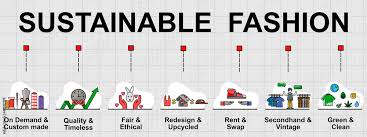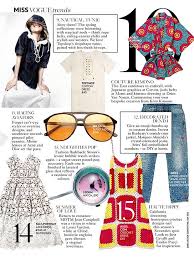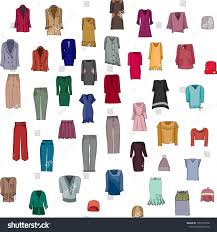Introduction.
The style business is going through a critical change as manageability turns into a focal worry for creators, shoppers, and policymakers the same. Once famous for its natural effect, the style area is presently investigating creative ways to deal with diminish its impression and advance moral practices. This article dives into the feasible style forming the fate of the business, featuring key turns of events and their suggestions.
· The Ascent of Eco-Accommodating Materials:
Quite possibly of the main change in reasonable style is the rising utilization of eco-accommodating materials. Conventional textures like cotton and polyester are being supplanted or enhanced by economical options like natural cotton, hemp, and bamboo. These materials require less pesticides and less water, diminishing their natural effect. Furthermore, inventive textures like Tencel, produced using wood mash, and Piñatex, got from pineapple leaves, are acquiring notoriety for their maintainability and interesting surfaces.
Reused materials are additionally causing disturbances in the design business. Brands are turning plastic containers, disposed of fishing nets, and old articles of clothing into new textures. Patagonia, for instance, has been a trailblazer in utilizing reused materials, integrating them into their items for quite a long time. This pattern decreases squander as well as accentuates the significance of roundabout style, where items are intended to be reused and reused.
· Moral Creation Practices:
Feasible style stretches out past materials to incorporate moral creation rehearses. Brands are progressively straightforward about their stock chains, guaranteeing fair wages and safe working circumstances for all specialists engaged with the creation cycle. This shift is part of the way determined by shopper interest for responsibility and the ascent of cognizant industrialism.
Fair exchange affirmation and drives like the Style Upheaval's #WhoMadeMyClothes crusade certainly stand out to the human expense of quick design. Thus, more brands are embracing moral practices and acquiring certificates that assurance fair treatment of laborers. This move towards moral creation is reshaping the business, pushing it towards additional dependable and compassionate practices.
· Slow Design Development:
The sluggish design development is a reaction to the quick style model that rules the business. Quick design energizes fast creation and utilization of minimal expense clothing, prompting huge ecological debasement and waste. Interestingly, slow style advances better standards without ever compromising, empowering purchasers to purchase less, longer-enduring things.
This pattern underscores immortal plans, strong materials, and craftsmanship. Brands like Eileen Fisher and Everlane center around making exemplary pieces that stay sharp and utilitarian for quite a long time. By putting resources into top notch pieces of clothing, customers can lessen their general utilization and add to a more reasonable design environment.
· Mechanical Advancements:
Innovation is assuming a urgent part in progressing maintainable style. From 3D printing to blockchain, different advancements are assisting with diminishing waste, further develop straightforwardness, and make more supportable items.
3D printing permits originators to make articles of clothing with insignificant waste, as materials are just utilized where required. This innovation additionally empowers customization, lessening the probability of overproduction. Also, blockchain innovation is being utilized to follow and check the beginnings of materials, guaranteeing straightforwardness in the production network and assisting customers with settling on informed decisions.
Man-made brainpower (artificial intelligence) is another mechanical progression molding supportable style. Simulated intelligence can foresee drifts and streamline stock, diminishing overproduction and waste. It additionally helps with planning items that meet customer inclinations while limiting ecological effect.
· Second-Hand and Rental Style:
The ascent of second-hand and rental style is one more huge pattern in feasible design. Secondhand shops, online resale stages, and attire rental administrations are acquiring fame as purchasers look for additional maintainable ways of shopping.
Stages like ThredUp and Depop offer shoppers the chance to trade pre-cherished apparel, expanding the existence pattern of articles of clothing and decreasing waste. Essentially, rental administrations like Lease the Runway permit shoppers to wear top of the line design without the ecological expense of possession. These stages are making supportable design more open and interesting to a more extensive crowd.
· Upcycling and Do-It-Yourself Design:
Upcycling and Do-It-Yourself design are imaginative reactions to the waste issue in the style business. Upcycling includes changing old or disposed of things into new, important items. Originators and shoppers the same are embracing this pattern, making interesting pieces from existing materials.
Do-It-Yourself style urges purchasers to fix, modify, and reuse their dress, advancing a more economical way to deal with design utilization. Studios, instructional exercises, and online networks are making it more straightforward for people to become familiar with these abilities and take part in manageable style rehearses.
· Corporate Obligation and Maintainable Marking:
As supportability turns into a really squeezing concern, brands are progressively coordinating it into their corporate systems. Organizations are laying out aggressive supportability objectives, like diminishing fossil fuel byproducts, disposing of waste, and utilizing environmentally friendly power sources.
Practical marking is likewise turning into a key showcasing methodology. Brands are featuring their eco-accommodating practices and items to draw in earth cognizant shoppers. While certain organizations participate in greenwashing — putting forth deceptive cases about their maintainability attempts — others are truly dedicated to having a beneficial outcome.
· Purchaser Mindfulness and Support:
The job of purchasers in driving economical style couldn't possibly be more significant. Expanding mindfulness about the ecological and social effects of style is provoking more individuals to go with moral decisions. Web-based entertainment and forces to be reckoned with are assuming a significant part in spreading the message, empowering supporters to take on manageable practices.
Support gatherings and non-benefit associations are additionally instrumental in advancing economical style. They give assets, bring issues to light, and consider brands responsible for their activities. As shopper interest for supportable style develops, pushing the business towards additional mindful practices is logical.
End:
The change to practical design isn't without its difficulties, yet the patterns framed above demonstrate a promising change in the business. By embracing eco-accommodating materials, moral creation rehearses, and inventive advances, the style area can essentially decrease its natural impression and advance social obligation. As customers, brands, and policymakers keep on focusing on supportability, the fate of style looks more splendid and more feasible.





You must be logged in to post a comment.